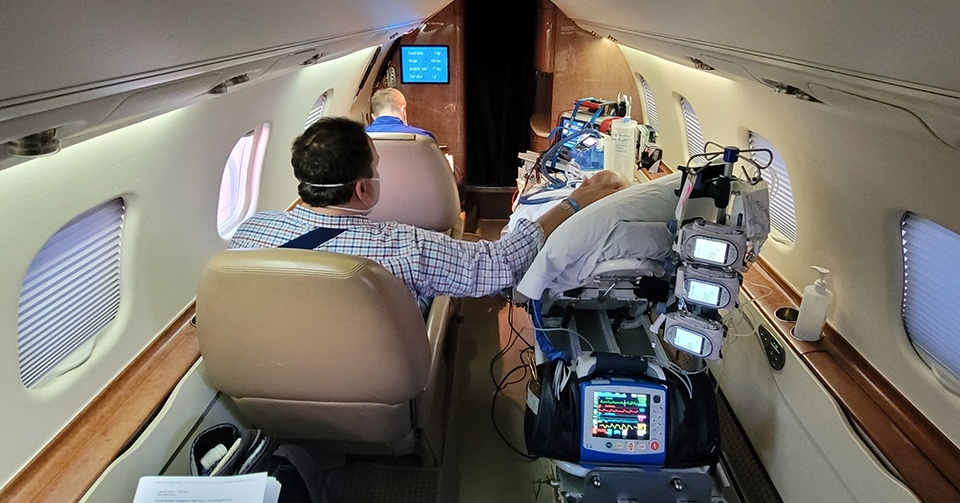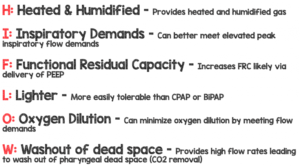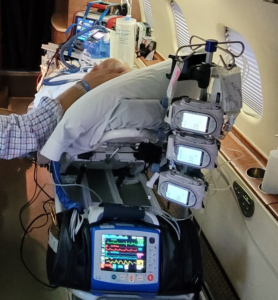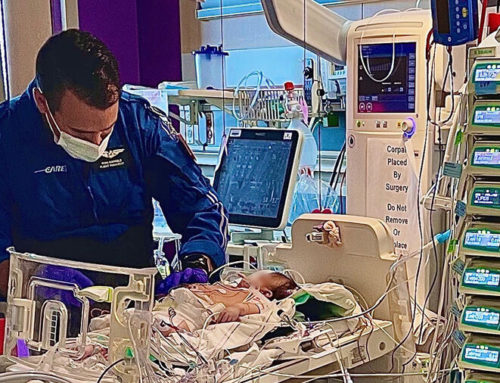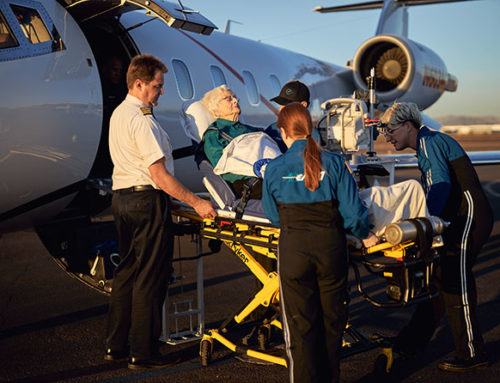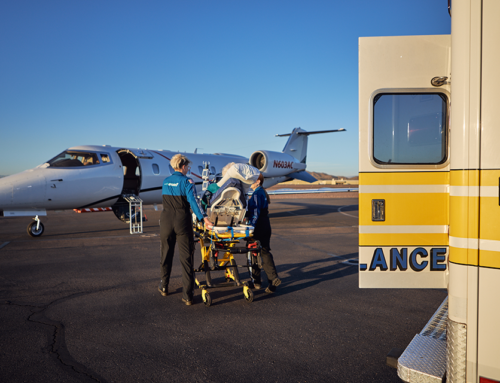Since the start of the pandemic, many treatment therapies have grown in popularity within the healthcare environment. One of these therapies is High Flow Oxygen Therapy. High Flow Oxygen Therapy helps reduce the need for invasive ventilation. It has proven to be an effective, non-invasive solution that allows patients to receive oxygen while reducing strain on the body and support healing.
In the past, High Flow Oxygen Therapy has only been used in a hospital setting. After observing the major benefits of this therapy, AirCARE1 researched how to incorporate high flow oxygen into the company’s air ambulance services.
Converting high flow over to the flight environment does have its challenges. In the Air Ambulance world, there is a limited supply of oxygen-carrying capabilities. This affects the amount of time that a patient can be transported while receiving high flow therapy. There are definite considerations in transporting a patient with high flow oxygen needs. The total patient transport time, the amount of oxygen needed during flight, as well as the amount of oxygen needed during ground ambulance transfers to and from the aircraft. By using an oxygen tank duration formula (Cylinder PSI x Cylinder Factor x Fio2 / Flow Rate) it allows the medical team to know, in minutes, how long the oxygen will last at the set rate for the patient. Extra time for any unforeseen issues is also incorporated into factoring the patient’s oxygen needs.
Patient High Flow Case Study
AirCARE1 was asked to transport a 70-year-old male from Arizona to California. He was diagnosed with Progressive Acute Systolic Congestive Heart Failure with an ejection fraction of 35%. He was being transported for further treatment, intervention and a second opinion at a facility in California.
Pre-flight Preparations
From the sending facility reports the AirCARE1 medical crew was made aware of the fact the patient would need increased oxygen during transport. The patient was currently on oxygen at 10 liters per minute (LMP) via oxy mask. To properly prepare for this, the team ensured all oxygen tanks on-board the aircraft were filled to capacity. Our dispatch team confirmed with both receiving and sending ground ambulance crews that their oxygen tanks were also at capacity. After discussing the patient’s condition as a team, the AirCARE1 crew decided the patient might be most comfortable on high flow via nasal canula. The aircraft was prepared with all the necessary equipment required to initiative high flow oxygen if needed. The team would make their final decision once bedside.
Bedside Evaluation
At bedside, the patient was found to be on multiple intravenous infusions including, vasopressin, Bumex and dobutamine to aid in stimulating the heart muscle to improve blood flow. He was still on oxygen at 10 LMP via oxy mask. After the medical crew completed their patient assessment, it was decided the patient would in fact benefit from high flow oxygen therapy. The team would begin therapy onboard the aircraft. Since the patient’s medical condition was stable at this point, the crew decided it was safer and made the most logistical sense to initiate high flow once on the aircraft versus initiating therapy at bedside. The patient was moved to the AirCARE1 stretcher system, hooked up to the IV infusion pumps and cardiac monitor. The medical crew continuously monitored the patient’s vital signs during the ground transfer to the aircraft.
Onboard the Aircraft
Once onboard the aircraft, the crew transferred the patient to high flow oxygen utilizing the Hamilton T1 ICU transport ventilator and Hamilton-H900 humidifier. Once connected, this proprietary system provides the same functionality as the high flow devices used in the hospital setting. The patient’s initial settings were a set flow of 40 Liters with an Fio2 of 70%. During flight, the medical team was able to decrease the patient’s Fi02 to 60% which aided in decreasing the onboard oxygen consumption. The high flow therapy provided a notable improvement in Sp02 from where the patient was while on just the oxy mask. Blood pressure along with other vitals were closely monitored due to the state of the heart failure. The infusing medications had to be adjusted to maintain blood pressure within the parameters set for this patient. Many patients report an increase in anxiety while on high flow and sedation medications are often required. This patient was not a candidate for such medications due to his hypotension. Fortunately, the patient was able to rest comfortably without sedation throughout the flight.
Arrival & Transfer of Care
In California, the receiving hospital was 12 miles away in heavy traffic from the airport. Since the ground ambulance was prepared with oxygen as planned, the medical team was able to move all necessary equipment with the patient to continue high flow therapy during the hour-long transport. Report was given while reviewing all interventions with the receiving nurse and care was transferred to the receiving hospital.
Patient Summary
During the patient’s transport with AirCARE1, the patient experienced improved results from high flow oxygen therapy. The heat and humidification along with elevating peak inspiratory flow demands allowed the patient’s lower airways to open and increase the functional residual capacity of his lungs. There was a noticeable decrease in work of breathing as a result of added treatments allowing the patient to be more comfortable during flight.
Utilizing High Flow Oxygen Therapy has allowed AirCARE1 to transport patients previously ineligible for transport due to high oxygen demands which has increased AirCARE1’s advanced critical care capabilities.
Click here to view the article on ITIJ’s website

